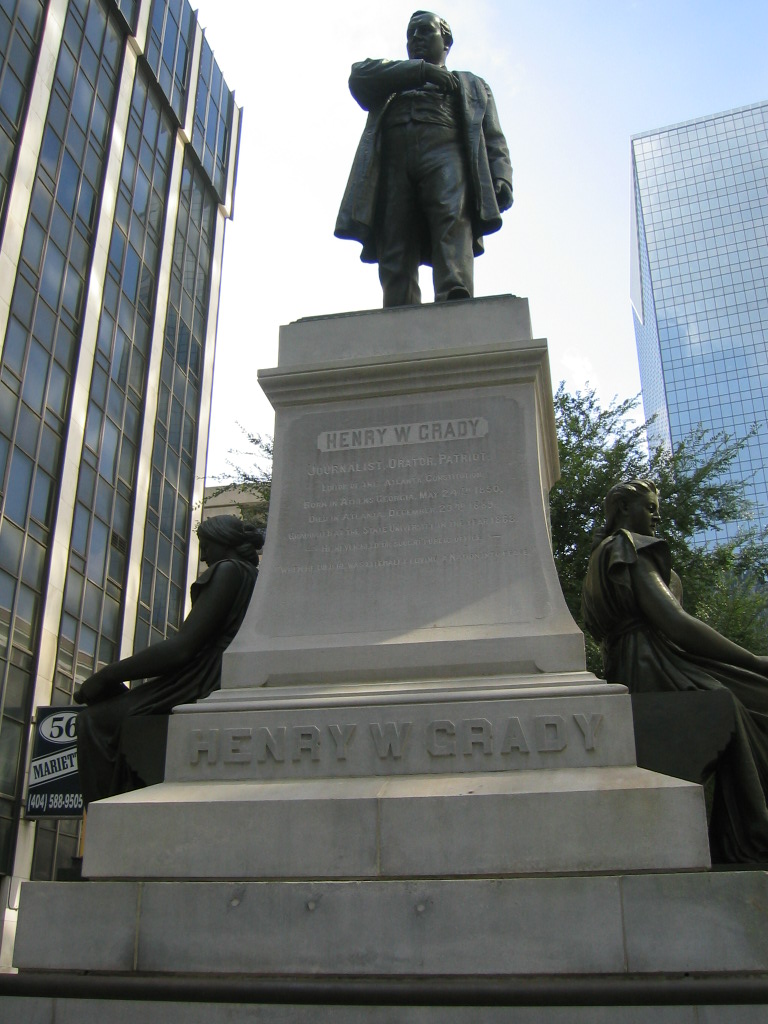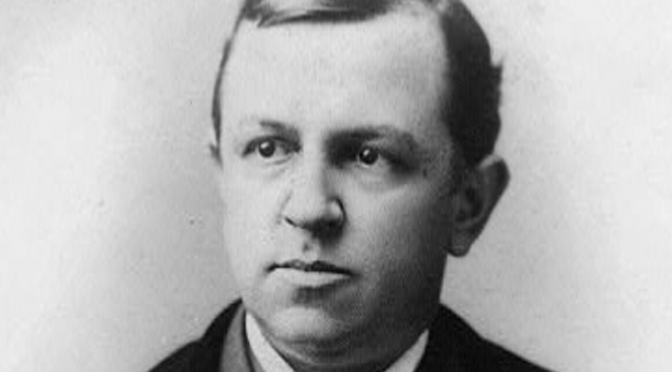By Kathy Roberts Forde, Associate Professor, Journalism Department, University of Massachusetts Amherst
The press is an essential guardrail of democracy. As The Washington Post tells its readers, “Democracy Dies in Darkness.”
But the press has not always been a champion of democracy.
In the late 19th century, Henry W. Grady, one of the South’s most prominent editors, worked closely with powerful political and business interests to build a white supremacist political economy and social order across Georgia – and the entire South – that lasted well into the 20th century. One of his primary tools was his newspaper, The Atlanta Constitution – which merged with The Atlanta Journal in 2001 to become The Atlanta Journal-Constitution.
My research, a collaboration with Ethan Bakuli and Natalie DiDomenico, undergraduate research partners in the Journalism Department at the University of Massachusetts Amherst, uncovers this history.
The ‘New South’ and racial terror
Grady enraptured white Americans with his speeches and columns about the “New South,” a narrative meant to attract Northern investment in the South’s emerging industrial economy.
“The relations of the Southern people with the negro are close and cordial,” Grady proclaimed in the 1886 New York speech that made him famous.
It was a brazen lie. Many white Americans believed it, or pretended they did, but black editors, journalists and leaders challenged it at every turn.
Grady promoted the New South’s reconciliation with the North, its industrial development and the availability of cheap Southern labor. What’s more, he insisted the “race problem” must be left to the South to resolve.
He meant, of course, the white South.
T. Thomas Fortune, a militant black newspaper editor in New York, would have none of it.
“Mr. Grady appeals to the North to leave the race question to ‘us’ and ‘we’ will settle it,” he wrote. “So we will; but the we Mr. Grady had ‘in his mind’s eye’ will not be permitted to settle it alone. Not by any means, Mr. Grady. Not only the White we, but the Colored we as well, will demand a share in that settlement.”
Grady didn’t listen. Instead, he explained to adoring white crowds why the South was committed to one-party rule: to deprive black men of electoral power.
In 1889, the year he died unexpectedly at 39, Grady told a crowd at the Texas State Fair, “The supremacy of the white race of the South must be maintained forever, and the domination of the negro race resisted at all points and at all hazards – because the white race is the superior race.”
The pioneering black journalist Ida B. Wells understood his meaning. In “Southern Horrors,” a pamphlet that documented lynching and the all-too-frequent collaboration of the white Southern press, Wells drew a straight line from Henry Grady’s New South ideology to the white South’s practice of racial terror:
“Henry W. Grady in his well-remembered speeches in New England and New York pictured the Afro-American as incapable of self-government. Through him … the cry of the South to the country has been ‘Hands off! Leave us to solve our problem.’ To the Afro-American the South says, ‘the white man must and will rule.’ There is little difference between the Antebellum South and the New South.”
Under Grady’s editorial guidance, the Constitution wrote about lynching with disturbing levity, condoning and even encouraging it. One headline read “The Triple Trapeze: Three Negroes Hung to a Limb of a Tree.” Another rhymed “Two Minutes to Pray Before a Rope Dislocated Their Vertebrae.”
Yet another headline read: “Lynching Too Good For the Black Miscreant Who Assaulted Mrs. Bush: He Will Be Lynched.” And appallingly, the man was lynched. Today, his name – Reuben Hudson – appears on the National Memorial for Peace and Justice, a monument in Montgomery, Alabama, for victims of “racial terror lynchings.”
Some historians have called Grady a racial moderate for his time and place, but his own words suggest he was comfortable with racial violence.
Well before he became managing editor and part owner of the Constitution, Grady addressed an editorial in the Rome Commercial, a Georgia newspaper he edited early in his career, to his “friends” and “brothers” in the “Ku Klux Klan.”
“The strength and power of any secret organization rests in the attribute of mystery and hidden force,” he wrote. Its members “can be called together by a tiny signal, and when the work is done, can melt away into shadowy nothing.”

Convict labor in the ‘New South’
Lynching was not the only white tool of racial terror and control in the South. Another was the convict lease, which, along with lynching, Wells termed the “twin infamies” of the region.
Grady’s New South promise of cheap labor for industrialists was fulfilled in part by convict leasing – a penal system targeting black men, women and even children, who were routinely arrested for vagrancy, minor offenses and trumped up charges. Once convicted, victims were leased to private companies to serve their sentences working in coal mines, laying railroad tracks and making bricks.
Horrors awaited in these private labor camps: shackles, chains, rancid food, disease, filthy bedding, work from sunup to sundown and tortures like the “sweat box,” flogging, hanging by the thumbs, a water treatment akin to waterboarding and rape. Convicts were killed during escape attempts, in mine explosions and railroad accidents and by sadistic camp bosses.
Grady knew the convict lease system well. His newspaper reported on it frequently, as I discovered by reading material in his personal archive at Emory University and contemporaneous issues of the Constitution.
What’s more, from 1880 to his death in 1889, Grady served as kingmaker for a group of white supremacist Democrats – variously termed the “Atlanta Ring” and the “Bourbon Triumvirate” – who enriched themselves by leasing convicts from the state to work in their private businesses.
In an era of machine politics and a press aligned with political parties, Grady proved a master of both.
Using the Constitution as a tool of public influence, Grady helped appoint or elect Joseph E. Brown to the U.S. Senate (1880-1890), Alfred H. Colquitt to the governorship (1880-1882) and U.S. Senate (1883-1894), and John B. Gordon to the governorship (1886-1890).
Brown made a fortune working convicts at his Dade Coal Mines, where Colquitt was a major investor. Gordon worked convicts on his plantation and subleased others to companies and farmers.
In 1886, Grady sent a Constitution reporter to cover a rebellion at Brown’s coal mines. The prisoners were “ready to die, and would as soon be dead as to live in torture,” one convict said. The governor ordered the convicts starved into submission, and Grady’s reporter witnessed the flogging that followed their surrender. He called it “a special matinee” in his news report.
Black Georgians protested their powerful white neighbors profiteering off forced black labor. William White, editor of the black newspaper the Georgia Baptist, put it plainly: “The fortunes of many a prominent white Georgia family [are] red with the blood and sweat of Black men.”
Grady’s legacy
Grady may have been a pioneering journalist, but his journalism served profoundly anti-democratic purposes.
The University of Georgia’s journalism school is named for Grady – a fitting namesake, it was recently said, because of Grady’s “work in uniting the country, not dividing the country.”
Grady may have united Southern and Northern whites, but he did not unite the country. Rather, he excluded black Americans from the union of North and South and the national democratic project that union represented.
The Grady College motto is “We Are Grady.” Thomas Fortune might well have asked Grady who he would include in that “we.”
Republished with permission under license from The Conversation

